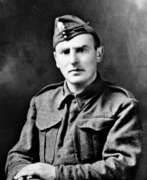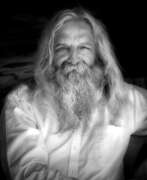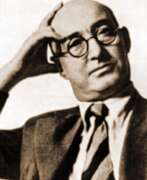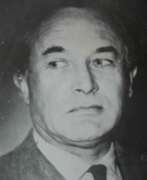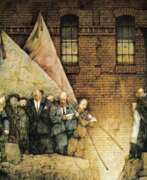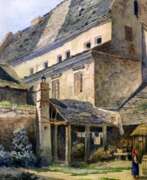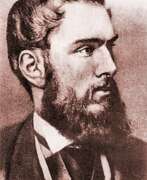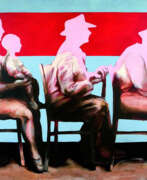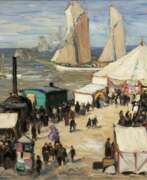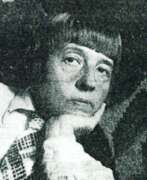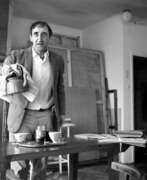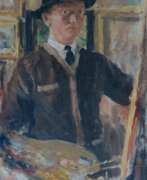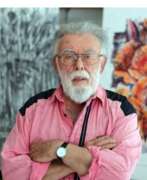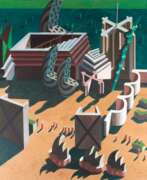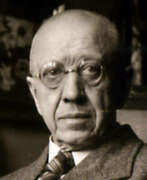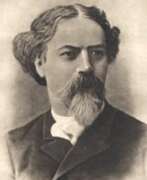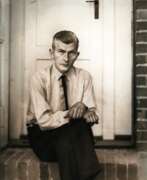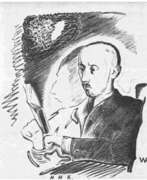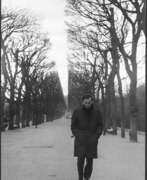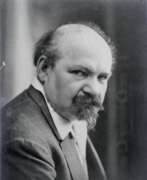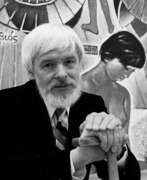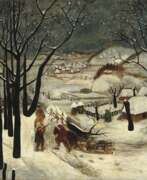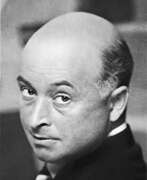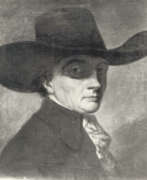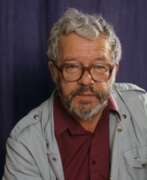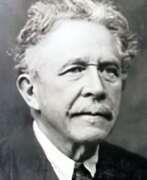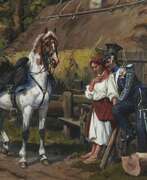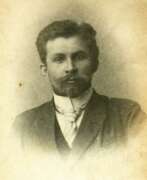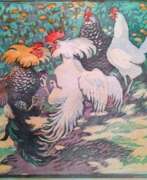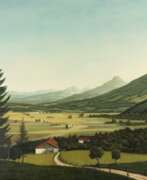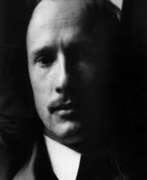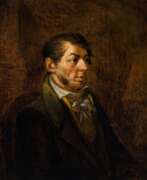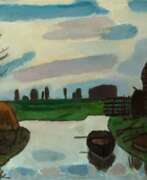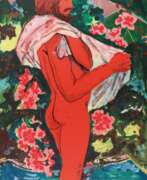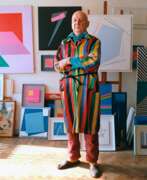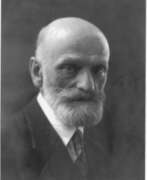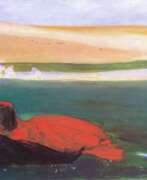Graphic artists Poland
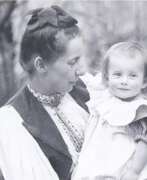

Jenny Fikentscher (born Nottebohm) was a German painter and graphic artist associated with the Art Nouveau movement. She studied at the School of Women Painters in Karlsruhe and later became part of the Grötzingen artist colony. Fikentscher married animal painter Otto Fikentscher and raised five children in an unconventional artistic household. She was known for her botanical motifs and lithographs, often featuring local plants. Fikentscher also created collectible images for the Stollwerck chocolate company.
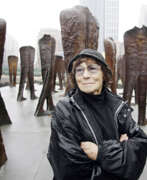

Magdalena Abakanowicz was a distinguished Polish artist, celebrated for her innovative use of textiles as a sculptural medium. Born on June 20, 1930, in Falenty, Poland, and passing away on April 20, 2017, in Warsaw, she carved out a significant place in the art world with her unique artistic expressions that often explored themes of crowd behavior, the trauma of war, and the individuality of the human condition.
Abakanowicz's education at the Academy of Fine Arts in Warsaw was a period of both artistic and personal growth, shaping her future works. During the 1960s, she began creating the "Abakans," large-scale textile sculptures that challenged conventional forms and expressed dynamic movement and vivid emotion. Her works often featured organic, tactile materials like burlap, resin, and wood, which added a profound depth and rawness to her sculptures.
Her sculptures are well-represented in major public installations and collections worldwide, including the National Museum in Wrocław, Poland, Grant Park in Chicago, and the National Gallery of Art Sculpture Garden in Washington, D.C. These pieces are not just art forms but are experiences, inviting viewers to explore deeper psychological and existential themes.
For those captivated by the profound impact and the stirring beauty of Magdalena Abakanowicz's work, subscribing for updates can provide regular insights and information on exhibitions and sales of her works at auctions. This is an excellent way to stay connected with the legacy of an artist who continuously redefined the boundaries of sculpture and installation art.
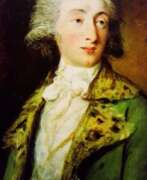

Carl Daniel David Friedrich Bach was a German artist of the late eighteenth and early nineteenth centuries, the Baroque period. He is known as a painter, graphic artist and printmaker.
Bach worked in the historical genre, was a portraitist, animalist, created canvases on allegorical subjects in the spirit of his era. In his works he combined elements of baroque and classicism. The artist often worked in the etching needle technique.
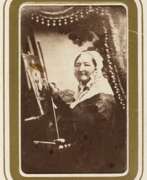

Henryka Zofia Maria Beyer was a German-Polish artist of the first half of the 19th century. She is known as a painter and graphic artist.
Henryka Beyer moved to Warsaw from Berlin early in her career. She worked in oil, watercolor and gouache. The artist preferred to paint still lifes with flowers and fruits in warm, dark colors, creating them in the style of Dutch artists of the 17th and 18th centuries and using mostly watercolors. She signed her works as Hka Beyer.
Beyer established the first painting school for women in Poland.
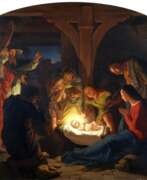

Albrecht Peter Bräuer was a German painter and draftsman, from 1860 a teacher at the School of Applied Arts in Breslau. Paintings for various places of worship, Bräuer soon made a name for himself as a church and history painter. In addition to this painting, he produced materials for art classes, such as templates for drawing classes, an ornamental work with 40 lithographs, which won a gold medal at a Berlin exhibition in 1878. He also copied works by old masters. He also engaged in experiments on dyes and art-theoretical research on perspective, anatomy and proportions. In addition, he collected engravings and drawings depicting garments, art objects from different times and cultures, as well as folders with ornamental, plant, perspective and anatomical studies for his studio at the art school.


Fyodor Fyodorovich Buchholz (Russian: Фёдор Фёдорович Бухгольц) was a Russian artist of German origin in the late 19th century and the first half of the 20th century. He is known as a painter, graphic artist and teacher.
Fyodor Buchholz painted mainly on historical themes and genre paintings, as well as portraits and landscapes. At the end of the XIX century, the artist was fascinated by Art Nouveau. After the revolution of 1917 he began to create works on the themes of social construction.
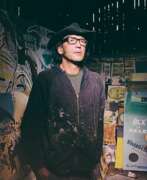

Andrzej Cisowski is a Polish multimedia artist and graphic artist.
Cisowski graduated from the Academy of Fine Arts in Warsaw and was initially associated with the Neue Wilde movement (Neo-Fauvism). Over time he developed his own individual style on the border of figurative painting and new expression. The artist also created paintings based on old photographs.
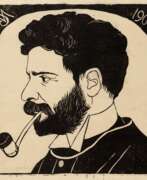

Samuel Jessurun de Mesquita was a Dutch graphic artist, born on June 6, 1868, in Amsterdam, into a Sephardic Jewish family. He became well-known for his contributions to graphic art, especially in the years leading up to the Second World War, and was notable for his mentorship of the famed artist M. C. Escher. De Mesquita's work was characterized by a variety of techniques and mediums, including wood engravings, etchings, lithographs, watercolors, and drawings. His art often featured birds, exotic animals, plants, flowers, and fantastical elements, both humorous and grim, showcasing his deep experimentation and mastery over his craft.
His career took a significant turn around 1915 when he began to gain prominence within Dutch graphic art, partly due to his teaching positions in the field. De Mesquita's penchant for experimentation led him to explore various materials for his prints, such as marble and zinc, and he often processed his prints with other materials, resulting in unique artworks. His subjects ranged from his immediate surroundings, such as his own home or the Artis zoo in Amsterdam, to more experimental and imaginative works that included quasi-human figures and fantastical landscapes.
Unfortunately, de Mesquita's life and career were tragically cut short by the Holocaust. Despite friends urging him to go into hiding, Samuel and his wife believed their Sephardic heritage would protect them. This proved to be a fatal miscalculation, and on January 31, 1944, they were arrested by the Nazis and subsequently died in Auschwitz. Their son Jaap died in Theresienstadt in March of the same year. M.C. Escher, a former pupil and friend, managed to save some of de Mesquita's works after his death, preserving his legacy for future generations.
Samuel Jessurun de Mesquita's body of work is a testament to his skill and creativity, with his pieces held in collections like the Kunstmuseum Den Haag and The Metropolitan Museum of Art. His works range from serene and simple depictions of animals and plants to more complex and imaginative 'Sensitivist' drawings that evoked a unique world from the artist's imagination.
For collectors and experts in art and antiques, de Mesquita's work offers a unique insight into the rich tradition of Dutch graphic arts and the avant-garde experiments of the early 20th century. His influence, particularly on M.C. Escher, highlights his importance in the development of graphic arts. Sign up for updates related to Samuel Jessurun de Mesquita to stay informed about new product sales and auction events showcasing his remarkable works.
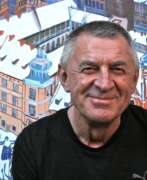

Edward Dwurnik was a Polish expressionist painter and graphic artist. Between 1963-1970 he studied painting, drawing and sculpture at the Academy of Fine Arts in Warsaw. He quickly became one of the most important figures of the Polish contemporary art scene.
Edward Dwurnik is best known for his large-scale paintings depicting everyday life, cityscapes and crowds of people. He often used bold, bright colours and strong black outlines to create his distinctive style. Many of his works depict the absurdity and contradictions of modern life in Poland and the struggles of ordinary people against political oppression and social injustice.
Throughout his career, Dwurnik's art has evolved and diversified, covering a wide range of techniques and themes. In addition to painting, he also worked in printmaking and drawing.
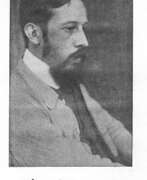

Fritz Helmuth Ehmcke was a German graphical designer, typographer and illustrator. Ehmcke was educated as a lithographer in Berlin during 1893–1897. In 1900, he was a co-founder of Steglitzer Werkstatt. From 1903, he taught at the Kunstgewerbeschule in Düsseldorf, from 1913 to 1938 in Munich, during 1920-1921 also in Zürich. During 1946 to 1948, he was professor at the Academy of Fine Arts, Munich. He designed a number of typesets, notably Ehmcke-Antiqua and Ehmcke-Kursiv in 1909/10 (adopted for English-language typesetting by Stephenson Blake under the name Carlton).
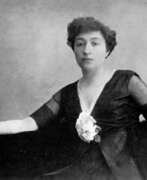

Aleksandra Aleksandrovna Ekster (Russian: Алекса́ндра Алекса́ндровна Эксте́р), a luminary of the Russian avant-garde, was a painter and designer whose work traversed the boundaries of Cubo-Futurism, Suprematism, and Constructivism, eventually influencing the Art Deco movement. Born in Białystok (then part of the Russian Empire, now Poland) and later splitting her life among Kiev, St. Petersburg, Moscow, Vienna, and Paris, Ekster played a pivotal role in bridging Russian and European artistic movements. Her innovative approach to art was characterized by dynamic movement, vibrant color contrasts, and geometric compositions, which were evident in her paintings, theater set and costume designs, and educational endeavors.
Ekster's studio became a hub for the intellectual and artistic elite, hosting figures like poets Anna Akhmatova and Osip Mandelstam, as well as painters Pablo Picasso and Georges Braque during her stays in Paris. Her involvement in significant art exhibitions, such as the Salon des Indépendants and the Salon de la Section d'Or in Paris, showcased her works alongside those of Jean Metzinger, Marcel Duchamp, and others, marking her as a key figure in the avant-garde community.
Beyond painting, Ekster's contributions to theater and design were profound. She worked on costume and set designs for Alexander Tairov's Chamber Theatre and participated in the revolutionary festivities' decoration in Kiev and Odessa. Ekster's pedagogical efforts included teaching at the Higher Artistic-Technical Workshop (VKhUTEMAS) in Moscow, fostering a new generation of avant-garde artists.
Ekster's work is housed in various international and private collections, reflecting her lasting impact on the art world. Her ability to integrate different genres and styles, along with her commitment to experimentation and innovation, made her one of the most influential women in the Russian avant-garde.
For those fascinated by the pioneering spirit of Aleksandra Aleksandrovna Ekster and the avant-garde movement, signing up for updates on new product sales and auction events related to her work is a compelling way to stay informed. This subscription ensures enthusiasts and collectors are always in the loop regarding opportunities to engage with Ekster's enduring legacy.
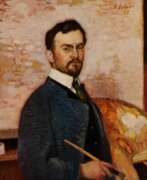

Fritz Erler was a German painter, graphic designer and scenic designer. Although most talented as an interior designer, he is perhaps best remembered for several propaganda posters he produced during World War I.
During the National Socialist period Erler's portraits of Adolf Hitler, Franz von Epp, and Wilhelm Frick were very remunerative.
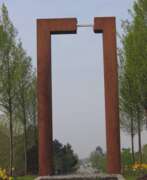

Kurt Fleckenstein is a German artist/sculptor associated with land art, minimal art and installation art. Fleckenstein was born in Heddesheim near Mannheim in Baden-Württemberg. His earlier career in landscape architecture, regional planning and horticultural art led to the establishment of several architectural studios in Germany, Austria and Poland. Since 2003 he has worked as a freelance artist with a focus on spatial objects and installations in exhibition centres and public open space. His provocative art form is designed to charm, irritate and challenge the viewer to question and compare “idealism with realism” on major social, cultural, economic and environmental issues. Fleckenstein now divides his home and work life between Mannheim, Germany and Wroclaw, Poland.
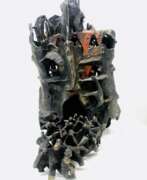

Tadeusz Foltyn was a Polish painter and sculptor.
In his works, the artist worked with various materials (bronze, iron and stone) to which he added paint. He achieved a dark and mysterious result, sometimes even causing destruction by depicting silhouettes, animals or buildings.
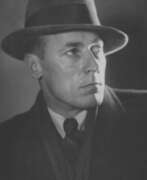

Jazep Mikhailovich Gorid (Russian: Язеп Михайлович Горид) was a Belarusian and Polish-Lithuanian artist of the first half of the twentieth century. He is known as a graphic artist and painter, caricaturist and illustrator.
Jazep Gorid drew political and everyday caricatures, painted portraits and landscapes. He also worked in book graphics, illustrated and designed books and other printed publications. In addition, the artist created stained-glass windows and murals.
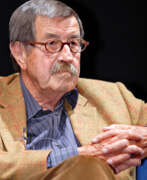

Günter Wilhelm Grass was a German novelist, poet, playwright, illustrator, graphic artist, sculptor, and recipient of the 1999 Nobel Prize in Literature.
Grass is best known for his first novel, The Tin Drum (1959), a key text in European magic realism. It was the first book of his Danzig Trilogy, the other two being Cat and Mouse and Dog Years. His works are frequently considered to have a left-wing political dimension, and Grass was an active supporter of the Social Democratic Party of Germany (SPD). The Tin Drum was adapted as a film of the same name, which won both the 1979 Palme d'Or and the Academy Award for Best Foreign Language Film. In 1999, the Swedish Academy awarded him the Nobel Prize in Literature, praising him as a writer "whose frolicsome black fables portray the forgotten face of history".


Blalla Wolfgang / Wolfgang Ewald Hallmann was a German painter and graphic artist. He deals with fundamental existential questions (religion, sexuality, ...) in a drastic, both blasphemous and obscene manner. Formally, it moves between surrealism, outsider art (Art Brut), folk art and numerous references to art history. In the 1980s, the cycle of "horror pictures" was created. In addition to other techniques, the reverse glass painting known from folk art is characteristic of him. In 1995/1996 Hallmann produced a series of 149 sheets of woodcuts in which he recapitulated his own career under the title “The Way, the Truth and Life”. He was a member of the artist trio around Herbert Haberl and Bernd Wangerin. In 1965 he was a founding member of a traveling theater that later became “Hoffmanns Comic Teater”. Members of this group later formed the rock band Ton Steine Scherben.
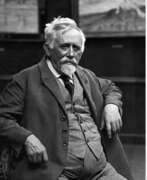

Hermann Hendrich was a German painter of the last quarter of the nineteenth and first third of the twentieth centuries. He is known as a painter known for his works in the Romantic and Old Germanic style.
Hendrich considered the canvases and interior for the "Walpurgis Hall" near Thale, created in 1901, to be the pinnacle of his work. For the "Nibelungen Hall" on Mount Drachenfels, opened in 1913 in honor of Richard Wagner, he painted 12 canvases based on ancient Germanic legends. The artist also created illustrations for Goethe's works, as well as exhibitions in the "Hall of German Sagas" in Solingen.
Hendrich was a co-founder of the Verdandi Union, which opposed modernism in art. A square in Berlin, Gendrichplatz, is named in his honor.
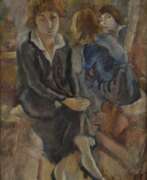

Moritz Heymann was a German painter, graphic artist and art teacher. Heymann initially worked primarily as a graphic artist and exhibited pencil drawings and lithographs. He created portrait and animal studies, especially of horses. Later he mainly showed paintings in exhibitions. From 1914 he often chose circus scenes as a motif for his works. He was a representative of Munich Impressionism.


Malgosia Jankowska is a contemporary Polish and German artist. She studied painting in Berlin and Warsaw. Her works are distinguished by fine strokes, great depth and a high level of detail. Her classical compositions are effective and expressive. Malgosha has been living and working in Berlin since 2001. Since 2006, he has regularly exhibited his work, mainly in Germany.


Paul Kleinschmidt was a German painter, graphic artist, engraver, and draftsman.
He studied at the Berlin Academy and at the Academy in Munich, where he studied the techniques of lithography and etching. Kleinschmidt created many etchings and lithographs in the modernist style and is also known for genre images of people having fun in restaurants.
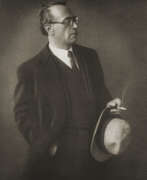



Jean Lambert-Rucki was a Polish avant-garde artist, sculptor, and graphic artist. He was best known for his participation in the Cubist, Surrealist and Art Deco movements. He exhibited at the 1913 Salon d'Automne in Paris; from 1919 was represented by both Léonce Rosenberg at the Galerie de l'Effort Moderne and the art dealer Paul Guillaume. In March 1920, Lambert-Rucki exhibited at the second exhibition of la Section d'Or, Galerie de La Boétie, Paris, and participated in the first exhibition of l'Union des Artistes Modernes, where he continued to show his works. He worked with diverse styles and media, at times he was influenced by the tribal art of Africa. Lambert-Rucki also became well known for his Cubist cityscapes.
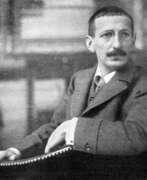

Walter Leistikow was a German painter of the late nineteenth and early twentieth centuries. He is known as a landscape painter, graphic artist, designer and art historian, a representative of the Jugendstil.
Early in his career Leistikow was one of the founders of the art group "Association of Eleven", which advocated modern art, rejecting academism. His landscapes, inspired by the Barbizon School, evolved toward simplification, sometimes with Art Nouveau influences. The artist sought to stylize landscapes, eschewing excessive detail in favor of silhouettes and blurred lines.
He also designed furniture, carpets and wallpaper, and in 1902 created trading cards for the Stollwerck chocolate company.


Jan Lenica was a Polish graphic designer and animation director.
Lenica studied architecture at the Warsaw University of Technology. After graduating, however, he turned to graphic design and became one of Poland's best-known poster designers.
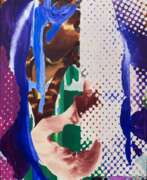

Piotr Makowski is a contemporary artist from Poland. He works primarily in painting and drawing, and his work often explores themes of memory, identity, and the passage of time.
Makowski studied at the Academy of Fine Arts in Gdańsk, Poland, and has since exhibited his work in numerous solo and group exhibitions in Poland and abroad. In 2013, he was awarded the Paszport Polityki award, one of the most prestigious awards for artists in Poland.
Overall, Makowski's work is marked by a keen sensitivity to the world around him, and an ability to capture the essence of his subjects with a subtle, understated touch.
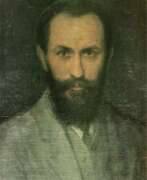

Anton Ivanovich Manastyrsky (Russian: Антон Иванович Манастырский) was a Ukrainian and Soviet artist of the twentieth century. He is known as a painter and graphic artist.
Anton Manastyrsky became famous for his genre paintings based on Ukrainian folk songs. His works are characterized by plasticity, rhythm and poetry. He also worked in the portrait genre, creating such canvases as "Portrait of Mother", "Portrait of Taras Shevchenko" and others. The master also illustrated books and worked in the religious genre, restoring the iconostasis in the Church of the Assumption of the Blessed Virgin Mary in Ancient Galich.
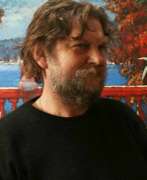

Adam Marczukiewicz is a Polish painter and graphic artist working in Krakow.
He graduated from the Academy of Fine Arts in Krakow at the Faculty of Graphic Arts, a member of the Association of Polish Artists.
Marczukiewicz works in different genres, but he has one recurring motif - prickly cacti. His paintings depict real events and views in a grotesque vision and are painted in rich vibrant colors.


Vasily Vasilyevich Mate (Russian: Василий Васильевич Матэ), birth name Wilhelm Johann Mathé, was a prominent Russian artist and engraver, made a significant mark in the art world during the late 19th century. Unlike many of his contemporaries who focused on poetry and painting, Vasily Mate specialized in the art of engraving, establishing himself as one of Russia's leading engravers.
Vasily Mate honed his skills at the Imperial Academy of Arts, where he later became a full member. His expertise in engraving set him apart in an era where Russian art was predominantly influenced by poetry and painting. Mate's collaboration with eminent Russian painters allowed him to produce engravings that captured the essence of their paintings, thereby playing a crucial role in popularizing Russian art.
Vasily Mate's engravings encompassed a range of subjects, including portraits of notable figures like Alexander Pushkin and Nikolai Gogol. His ability to intricately transcribe these subjects onto metal plates garnered admiration and respect, securing his legacy in the annals of Russian art history.
For art collectors and enthusiasts, Vasily Mate's works offer a glimpse into the rich cultural heritage of Russia. His engravings are not just artistic creations but historical artifacts that provide insight into the artistic endeavors of the late 19th century.
If you are keen on exploring more about Vasily Vasilyevich Mate and staying updated on sales and auction events related to his works, we invite you to sign up for our updates. This subscription will serve as your gateway to the fascinating world of Vasily Mate's engravings, ensuring you don't miss out on any opportunity to own a piece of Russian art history.


Felix Meseck was a German painter, illustrator and graphic artist.
He studied at the Academies of Fine Arts in Berlin and Königsberg, studying painting with Ludwig Dettmann and etching with Heinrich Wolf. In 1926 he was appointed professor at the Weimar Academy. After World War I, when he served at the front as a private soldier, Meseck took up engraving with success. He was a member of the Berlin Secession, the Association of German Artists, collaborated with leading magazines such as Ganymede, and illustrated works by Shakespeare, Goethe, Novalis, and Brentano.
Unfortunately, most of Felix Meseck's work was destroyed in 1945 during World War II. A frequent motif in Mezek's works is trees, and his techniques were pen drawings and dry needle etchings.
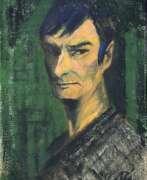

Otto Mueller was a German artist of the first third of the twentieth century. He is known as a painter, graphic artist and printmaker, a representative of German Expressionism, a member of the artists' group "Bridge".
Otto Mueller is considered one of the most lyrical German expressionist painters. His work reflected the unity of man and nature, characterized by simplification of forms, colors and contours. He became famous for his paintings of nude bodies and gypsy women, because of his fascination with which the artist was once nicknamed "Gypsy Mueller".
Mueller preferred to work in tempera on rough canvas, creating a matte surface. His artistic legacy includes 172 works, including lithographs, woodcuts and etchings.
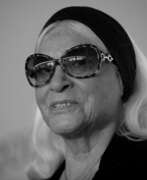

Natalia Lach-Lachowicz was a Polish artist who worked with paint, photography, drawing, performance, and video art. Sean O'Hagan, writing in The Guardian in 2017, described her as "a neglected early-1970s Polish-born pioneer of feminist avant garde image making".


Aleksander Orłowski (Russian: Александр Осипович Орловский), a renowned Polish painter and sketch artist, was born on March 9, 1777, in Warsaw, within the Polish-Lithuanian Commonwealth. His journey into the arts began under challenging circumstances; he was the son of a tavern-keeper and his family was not wealthy. His early promise in art was nurtured by noble patron Izabela Czartoryska, who financed his initial education under the guidance of artist Jan Piotr Norblin.
Orłowski's artistic journey intersected with his military service during the Kościuszko Uprising, a major revolt against Imperial Russia and Prussia in 1794. This period of conflict significantly influenced his later works, which often depicted military scenes and the daily life of soldiers. After the partitions of Poland, Orłowski moved to Saint Petersburg in 1802, where he became a seminal figure in the development of lithography in the Russian Empire.
His oeuvre includes a wide array of subjects, from battle scenes to cultural depictions of everyday life in both Poland and Russia. Notable works such as "Battle Scene" and "Cossack Fighting Off A Tiger" showcase his skill in capturing dynamic movement and drama. His works are preserved in esteemed institutions such as The Russian Museum and The Tretyakov Gallery, highlighting their historical and artistic value.
Orłowski's impact extended beyond the canvas; he was also mentioned in literary works by notable authors like Adam Mickiewicz and Alexander Pushkin, which underscores his cultural significance in the 19th century.
For collectors and experts in art and antiques, Aleksander Orłowski's works represent a crucial segment of Eastern European art history. To stay informed about new discoveries or auction events related to his works, consider subscribing for updates. This subscription ensures you receive timely information tailored to your interests, directly relating to new sales and significant events around Orłowski's art.
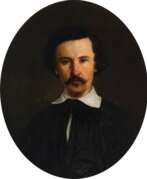

Edward Pawłowicz was a Polish-Lithuanian-Belarusian artist of the second half of the nineteenth and early twentieth centuries. He is known as a painter and graphic artist, public figure, memoirist and educator.
As an artist, Edward Pawłowicz painted portraits and landscapes in a style that critics define as transitional from classicism to romanticism. He also wrote several books of memoirs.


Zbigniew Rogalski is a Polish installation artist and photographer.
He is considered not just a painter, but a director of paintings, because he easily mixes painting and photography, taking advantage of both. As a result, Zbigniew Rogalski achieves illusion and optical effects in his creations, whether portrait or landscape.


Yakov Dorofeyevich Romas (Russian: Яков Дорофеевич Ромас) was a Russian artist renowned for his contributions to painting and decoration. Born in 1902 near Grodno, Romas had a rich educational background, having studied at the Prechistenka Technical Institute and the Artistic and Theatric Institute in Moscow. His education under notable artists like N.P. Krymov and P.P. Konchalovsky significantly influenced his artistic development. Romas was not only a participant in exhibitions since 1933 but also played a key role in the decoration of the Krasnoselskaya station of the Moscow subway. Beyond his contributions to public and architectural art, he served as a senior artist of the All-Union Agricultural Exhibition and tutored at the Surikov Moscow State Institute of Arts until his death in 1969 in Astrakhan.
Romas's life and work were deeply intertwined with the historical events of his time. He spent a significant portion of the WWII blockade on a cruiser, demonstrating remarkable bravery and skill. Notably, he trained about 150 Red Navy men and executed combat missions, earning him the Order of the Patriotic War of the II degree, the Order of the Red Star, and the medal “For the Defense of Leningrad”. His painting, “Winter Volleys of the Baltic,” created during this period, is celebrated for capturing the essence of the fleet's role in the war and stands as a testament to his artistic mastery and personal heroism.
Romas's works have been auctioned multiple times, fetching various prices and reflecting his enduring legacy in the art world. His piece titled “Northern Caspien” was auctioned for 2300 USD in 2006, indicating the continued interest and value of his work in the art market. His paintings are cherished not only for their historical significance but also for their artistic value, making them sought after by collectors and enthusiasts alike.
For those interested in exploring the profound work and legacy of Yakov Dorofeyevich Romas, signing up for updates is invaluable. By subscribing, you will receive alerts on new product sales and auction events related to Romas's artwork, ensuring you remain informed about opportunities to engage with and appreciate the contributions of this remarkable artist to Russian art and culture.
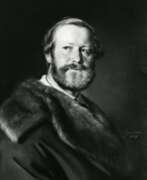

Karl Ludwig Rosenfelder was a German painter of the mid-nineteenth century. He is known as a painter, graphic artist, educator, and philosopher.
Rosenfelder specialized in religious and historical paintings, including large-scale paintings of medieval subjects. He also participated in the creation of wall paintings at the University of Königsberg, which earned him an honorary doctorate.
Rosenfelder was one of the founders of the Association of Berlin Artists in 1841, and in 1845 he became the founder and director of the Königsberg Art Academy, a position he held until 1874.


Alexander Ivanovich Sauerweid (Russian: Александр Иванович Зауервейд) was a Baltic German painter born on February 19, 1783, in the Duchy of Courland and Semigallia. He is best known for his detailed battle scenes and military portraits, which earned him significant acclaim in the 19th century. His early education in the arts took place at the Dresden Academy of Fine Arts, where he developed a strong foundation in painting.
Sauerweid's talent for depicting military subjects brought him to the attention of prominent figures of his time, including Napoleon and Tsar Alexander I of Russia. Invited to Saint Petersburg in 1814, Sauerweid became the official painter of the Russian General Staff and later a professor at the St. Petersburg Imperial Academy of Arts. His role involved teaching battle painting and producing works that depicted various military uniforms and scenes, a specialty that set him apart from his contemporaries.
Among his notable works are "The Battle of Leipzig" and "The Siege of Varna," which showcase his ability to capture the dynamism and drama of military engagements. Many of Sauerweid's paintings are housed in Russian Imperial Palaces, reflecting their historical and artistic value.
For collectors and enthusiasts, keeping abreast of Alexander Ivanovich Sauerweid's works is essential. Subscribe to our updates to be the first to know about new product sales and auction events related to this distinguished artist. Sign up now!


Ignotas Mauricijus Ščedrauskas (Russian: Игнатий Степанович Щедровский) was a mid-nineteenth-century Russian artist of Polish-Lithuanian origin. He is known as a painter, draughtsman, and lithographer.
Ignotas Ščedrauskas is considered an outstanding genre painter of the natural school, close to the Venetsianov school. He worked mainly in lithography and also painted genre pictures from the life of Russian people, mainly craftsmen. In his works of this genre the artist sought to reliably convey scenes of urban life and social characteristics of urban types. The master also created landscapes, mostly of the Vilna region of Lithuania.
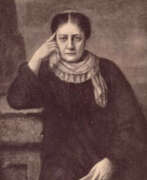

Hermann Schmiechen was a German painter of the late nineteenth and first quarter of the twentieth centuries. He is known as a painter, graphic artist, portraitist, representative of the Düsseldorf School of painting, and theosophist.
Hermann Schmiechen studied art in Breslau and Düsseldorf, and was a member of the art association "Malkasten". In 1883 he was invited to England to create portraits of the British aristocracy. In London, the artist became a member of the Theosophical Society. At the request of Helena Blavatsky, the head of the society, he drew several portraits of theosophical mahatmas. According to researchers, the master showed certain psychic abilities, which makes his work interesting and unique.
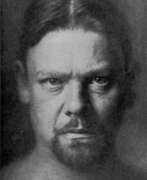

Rudolph Karl Alexander / Sascha Schneider was a German painter and sculptor. Schneider was born in Saint Petersburg in 1870. During his childhood, his family lived in Zürich, but following the death of his father, Schneider moved to Dresden, where in 1889 he became a student at the Dresden Academy of Fine Arts. In 1903, he met best-selling author Karl May, and subsequently became the cover illustrator of a number of May's books. A year later in 1904, Schneider was appointed professor at the Großherzoglich-Sächsische Kunstschule Weimar.
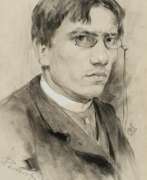

Paul Alfred Schroeter or Schröter was a German painter and etcher. He became a member of the Munich Secession and participated in their first exhibition of 1894. From 1898 to 1901, he lived in Hamburg where he became a co-founder of the Hamburgischer Künstlerklub. Many of his works are in private collections. Most of the others were destroyed during World War II.


Georg Eberhard Wolfgang Schuster-Woldan was a German painter and graphic artist, began his artistic education at the Stuttgart Academy of Fine Arts. After a brief interruption due to military service, he continued his studies in Munich and later in Frankfurt. He established a private art school in Munich and gained recognition for his large-scale paintings of legends and fairy tales. Schuster-Woldan later focused on portraiture, particularly of children and women. His works were highly regarded and exhibited prominently, notably at the Glaspalast in Munich.


Max Schwarzer was a German commercial artist and illustrator. In 1914, together with Friedrich Heubner, Valentin Zietara, Emil Preetorius, Franz Paul Glass and Carl Moos, he founded the artists' association The Six, one of the first groups of artists to market advertising commissions. Max Schwarzer drew for the satirical journal Simplicissimus. His carnival posters shaped the Munich carnival, such as In the Magic Garden of Regina (Carnival 1928) or Munich Carnival (1934). Max Schwarzer painted covers for the magazine Uhu in the New Objectivity style. In 1930 he made the Art Deco mosaics on the steamer Europa with Hans Gött. In the early 1920s, he illustrated the fairy tale volumes for the Munich Rösl publishing house with hand-colored pictures and ornaments.
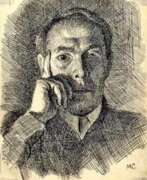

Mikhas Sevruk (Russian: Михаил Константинович Севрук) was a Belarusian and Lithuanian artist of the mid-20th century. He is known as a painter, graphic artist, illustrator and engraver.
Mikhas Sevruk is considered a representative of the Vilna art school, which is characterized by the traditions of academic and neo-realistic art. At the beginning of his career, the artist leaned towards romanticism. In the last three decades the artist created mainly genre paintings and landscapes.
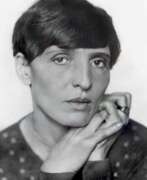

Renée Sintenis was a German sculptor, medallist, and graphic artist who worked in Berlin. She created mainly small-sized animal sculptures, female nudes, portraits, and sports statuettes. She is especially known for her Berlin Bear sculptures, which was used as the design for the Berlinale's top flim award, the Golden Bear.


Kama Sokolnicka is a Polish graphic artist, designer and collage artist.
She graduated from the Faculty of Graphic Arts at the Academy of Fine Arts in Wroclaw, Poland. Sokolnicka works in book design, painting, drawing, collage, and creates installations. She often uses the principles of collage and montage in her work, resulting in interesting juxtapositions.
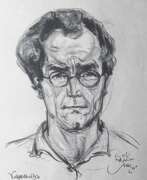

Emil Wilhelm Stumpp was a German painter, teacher, and artist known for his cartoons and drawings of well-known people in the 1930s during the Weimar Republic. He created portraits of many well known people including Bertold Brecht, Chancellor Friedrich Ebert, Thomas Mann. He was eventually commissioned to create a portrait of Adolf Hitler for his birthday in 1933. The work was not well received and the portrait, Stumpp, his paper (the General Anzeiger), and its editor were all prohibited. He left about 6,000 drawings which were all drawn from life.
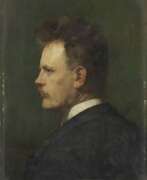

Walter Thor was a German painter and illustrator. He studied at the Academy of Fine Arts, Munich and worked for some time in Paris. He mainly drew commercial posters in the Art nouveau style with a humorous touch, but also produced some oil paintings. His works include French automotive related posters.
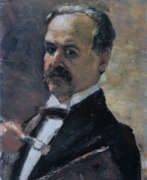

Lesser Ury was a German painter of the late nineteenth and first third of the twentieth centuries of Jewish origin. He is known as an impressionist painter, graphic artist and printmaker, a representative of the Düsseldorf school of painting.
Ury painted rural and urban landscapes, still lifes and monumental paintings on biblical themes. His works depicting the streets of Berlin and views of Brandenburg are particularly notable. Ury mastered both oil colors, creating floral paintings and urban scenes, and pastels, conveying an atmosphere of air and light in landscapes.
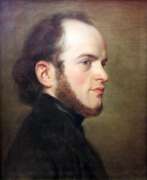

Adolph Friedrich Erdmann von Menzel was a German Realist artist noted for drawings, etchings, and paintings. Along with Caspar David Friedrich, he is considered one of the two most prominent German painters of the 19th century, and was the most successful artist of his era in Germany. First known as Adolph Menzel, he was knighted in 1898 and changed his name to Adolph von Menzel.
His popularity in his native country, owing especially to his history paintings, was such that few of his major paintings left Germany, as many were quickly acquired by museums in Berlin. Menzel's graphic work (and especially his drawings) were more widely disseminated; these, along with informal paintings not initially intended for display, have largely accounted for his posthumous reputation.
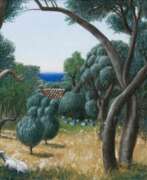

Klaus von Woyski was a German painter, graphic artist and restorer.
Von Woyski joined the Verband Bildender Künstler Kassel (Association of Visual Artists Kassel) and turned to non-objective painting at this time, numerous participations in exhibitions followed.
Since the entire family moved to Greece in 1970, Klaus von Woyski's painting style changed back to realism due to the new impressions of the landscape and the Greek light.
